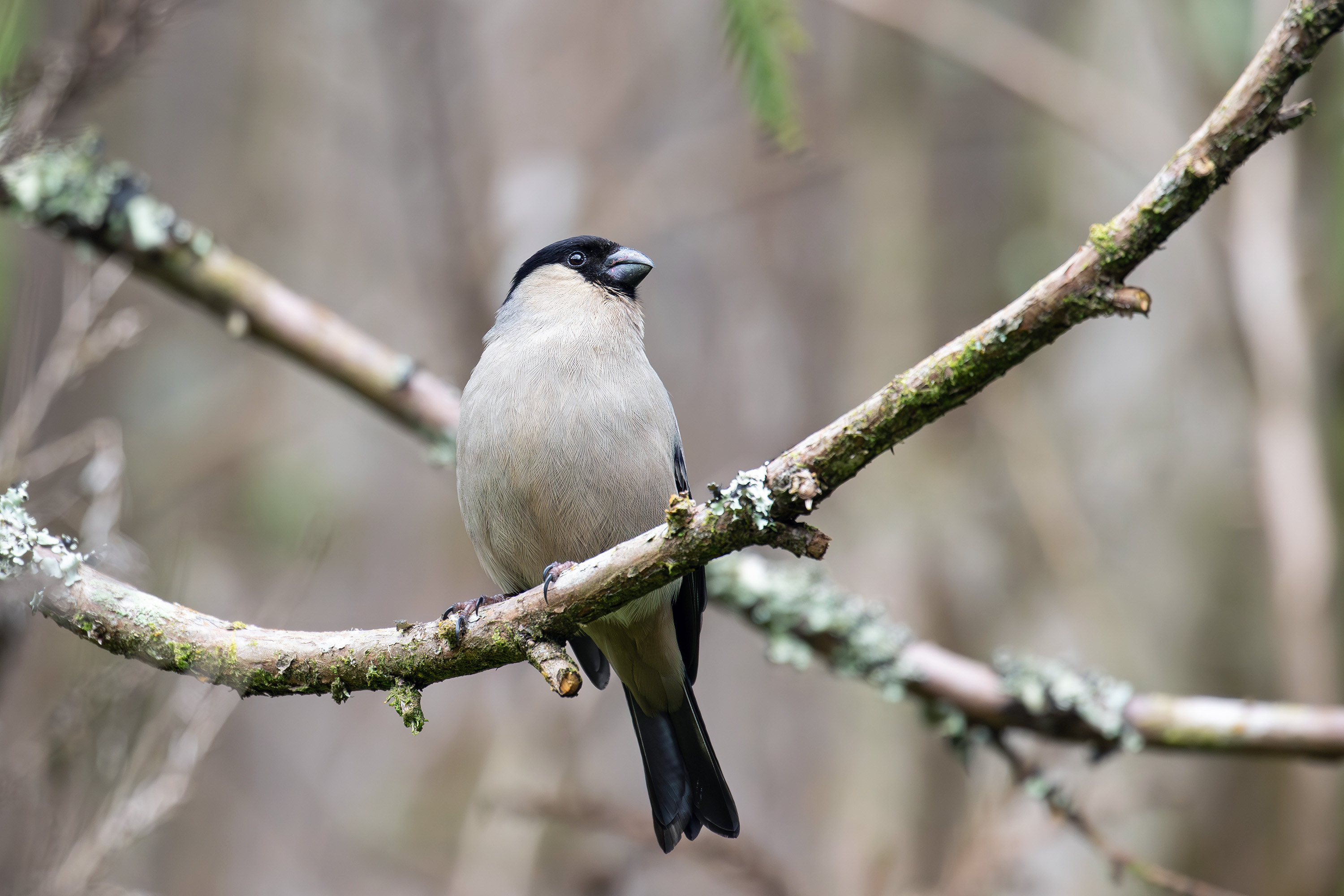Azorengoudvink
Pyrrhula murina · Azores Bullfinch
 Azorengoudvink ·
Pyrrhula murina
·
01-06-2024 · Diedert Koppenol
Azorengoudvink ·
Pyrrhula murina
·
01-06-2024 · Diedert Koppenol
| Datum | 1 juni 2024 |
|---|---|
| Locatie | São Miguel - Azoren |
| Fotograaf |
|
| Bekeken | 2693 × |
Azorengoudvink neemt in aantal toe en is tegenwoordig niet meer geclassificeerd als CR maar als Vulnerable (sinds 2016); de populatie is toegenomen van 30-40 paar in de jaren '70 naar 500-1700 volwassen individuen. Een vrij grove schatting als je het mij vraagt, maar goed om te lezen dat het beter gaat met de soort. Het belangrijkste qua beschermingsmaatregelen was en is het herstel van inheemse laurierbossen. Er is al bijna 450 hectare hersteld, maar je ziet nog enorm veel invasieve exoten overal op het eiland. De Priolo zelf is zeker nog steeds niet algemeen en blijft nog steeds niet echt makkelijk te vinden in het oosten van het eiland. Mij is niet bekend of de soort ooit ook voorkwam op andere eilanden in de Azoren of echt alleen op São Miguel? |
Discussie
Jan Hein van Steenis
·
15 juli 2024 21:41, gewijzigd 24 juli 2024 13:25
Hij lijkt echt alleen bekend van São Miguel (dat ook relatief geïsoleerd ligt).
Van Graciosa is recent Pyrrhula crassa beschreven. Wellicht zijn er op andere eilanden ook subfossiele goudvinken te vinden.
Diedert Koppenol
·
16 juli 2024 14:43, gewijzigd 16 juli 2024 14:44
Ah, cool, Jan Hein. Dank voor de link!
Helaas uitgestorven; had het vogelen op Graciosa zeker wat interessanter gemaakt. Al zijn de kwartels en de zeevogels natuurlijk erg leuk is het verder wel wat saai...
Ton Eggenhuizen
·
16 juli 2024 14:57, gewijzigd 16 juli 2024 14:58
in 2011 gesproken met de mensen die handmatig in de weer waren met het uitspitten van de Himalaya-gemberlelie en andere exoten en het terugplanten van de inheemse laurierbos-vegetatie. Mooi werk. De taalbarriëre had er nog een fraai stijlbloempje in petto: De man had het over het opkweken van het "semen" van de oorspronkelijke vegetatie. Het duurde even eer ik mij realiseerde dat hij daarmee "seed" bedoelde. Zijn aanwijzingen waar ik de goudvink vervolgens kon treffen had gelukkig weinig vertaling nodig: "only hundred meters along this road".
Rubén Barone
·
24 juli 2024 13:05
Hi.
Nice photo...
About the Priôlo or Azores Bullfinch there is an excellent monograph, published in Portuguese, which reference is:
RAMOS, J. A. (2005). O Priolo e a floresta natural de altitude. Ediçao da Câmara Municipal de Nordeste. Sao Miguel. 83 pp.
Naturally, there are also several scientific papers on the species, many of them published by the same author.
When I visited the Serra da Tronqueira area in the eastern part of Sao Miguel island (the main stronghold of the species) in September 1996, we could see 4-5 individuals, some at close distances. Now the bird's situation has improved, thanks to an important effort to preserve its habitat and to the regular monitoring work to know the present populations.
Best regards.
Rubén Barone
·
24 juli 2024 13:14
Hi again.
The paper in which the new, subfossil species of Bullfinch from the Azores is described as new to science is:
RANDO, J. C., H. PIEPER, S. L. OLSON, F. PEREIRA & J. A. ALCOVER (2017). A new extinct species of large bullfinch (Aves: Fringillidae: Pyrrhula) from Graciosa Island (Azores, North Atlantic Ocean). Zootaxa 4.282 (3): 567–583.
Its name is Pyrrhula crassa, not P. grossa, and was found on Graciosa Island.
Best regards from the Canaries.
Jan Hein van Steenis
·
24 juli 2024 13:26
Thanks Rubén, I have corrected the name.
Rubén Barone
·
24 juli 2024 13:47
Hi once more.
One of the most important papers published in recent years on the Priôlo or Azores Bullfinch is this:
GIL, A. et al. (2016). The Priolo Atlas: A citizen science-based census initiative for supporting Pyrrhula murina habitat conservation and restoration policies in São Miguel Island (Azores, Portugal). Ecological Engineering 86 (2016): 45–52.
The publication shows good information and maps about the present situation of the species on Sao Miguel Island (eastern region).
Best regards again.
Diedert Koppenol
·
24 juli 2024 20:56
Thanks for the articles and information, Rubén. Interesting reads!
Rubén Barone
·
26 juli 2024 12:04
Hi again.
Thanks for your response, Diedert.
Even if it's not very recent, another good and interesting paper about the Priôlo or Azores Bullfinch is this:
RAMOS, J. A. (1994). The annual cycle of the Azores Bullfinch, Pyrrhula murina Goldman [sic], 1866 (Aves: Passeriformes). Arquipélago. Life and Marine Sciences 12A: 101-109.
Best regards from the Canaries.
Gebruikers van het forum gaan akkoord met de forumregels.
